mievent
AUSCRS 2023
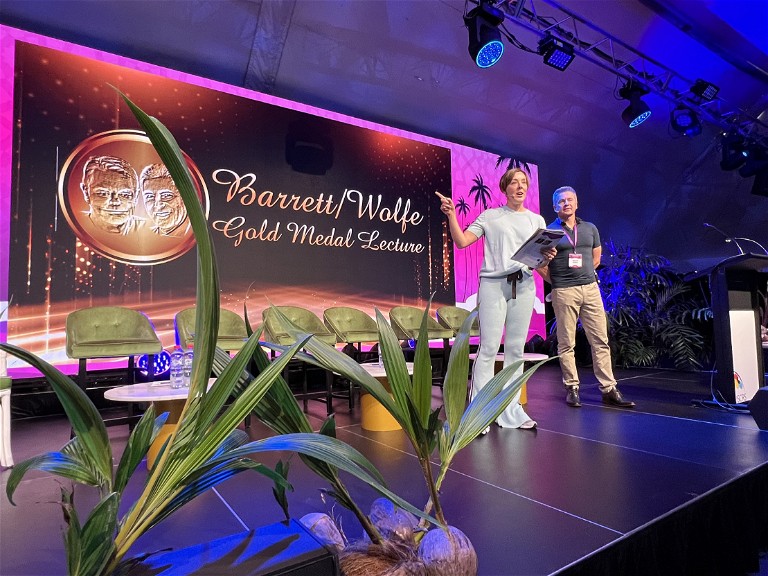
A Whole New World
WRITER Alan Saks
The Australasian Society of Cataract and Refractive Surgeons (AUSCRS) took a “step into the unknown (with a) changing of the guard” for its ‘Whole New World’ conference. Alan Saks was there.
New co-presidents, Dr Jacqueline Beltz and Professor Gerard Sutton, didn’t let a wet start put a dampener on proceedings, kicking off the 26th AUSCRS, held in Port Douglas in July, with a super opening cocktail party and dinner.
First up in the plenary sessions was the inaugural Barrett/Wolfe Gold Medal Lecture.
Dr Damien Gatinel, of the Rothschild Foundation in Paris, delivered the award talk, ‘Unveiling the secrets of precise IOL power calculation through theoretical analysis and cutting-edge modelling’. He covered various refractive models and complex intraocular lens (IOL) power calculations. Additionally, he detailed the open-source, Artificial Intelligence (AI) based PEARL-DGS formula – which stands for Prediction Enhanced by ARtificial Intelligence and output Linearisation, with DGS acknowledging the formula developers, Debellemanière, Gatinel, and Saad.
He explained how specific IOL designs and geometry can affect outcomes: If the posterior of the IOL is steeper, it may create a hyperopic surprise while if most of the IOL power is anterior, a mild myopic surprise may result. In another talk Dr Gatinel was also very firm in his belief that the root cause of keratoconus (KC) is through eye rubbing, which he illustrated with convincing cases.
The traditional rapid-fire sponsor presentations drew great applause from the delegates, with Glaukos taking home the prize. There were a number of breakfast and evening seminars with leading speakers hosted by the platinum sponsors, Alcon, Bausch and Lomb, Device Technologies, and Johnson & Johnson Vision. The trade exhibition was a hive of activity.
In the first themed session, Complex Cases ‘The good, the bad and the ugly’, Associate Professor Karl Stonecipher from North Carolina, in the United States, presented ‘Please don’t send me this patient, well, you can if you’re really frustrated…’
He mentioned Dextenza, a dexamethasone containing ophthalmic punctal insert, which provides a 90-day steroid release. For a Sjögren’s patient with post IOL exaggeration of symptoms, cenegermin-based Oxervate was prescribed as an eye drop which contains a recombinant form of human nerve growth factor, with promising results.
Adjunct Professor Soon-Phaik Chee from Singapore shared cases of ‘Managing intraoperative zonulysis’ with excellent surgical videos illustrating capsular hooks, suture snares, capsular tension rings, and fixating IOLs, as did some of the other presenters. She elaborated on various tips and tricks, like cutting sutures with a slant to enable easier threading. She advised supine examination with an ophthalmoscope to find an errant lens, as well as ultrasound biomicroscopy.
Speakers and commentators highlighted the use of Lissamine Green to light up desiccated tissue. Professor Michael Lawless suggested prescribing a short course of strong initial steroids (like dexamethasone) for maximal effect to break the cycle of inflammation, then tapering with milder steroids.
“ The traditional rapid-fire sponsor presentations drew great applause from the delegates, with Glaukos taking home the prize ”
This sort of interaction, from those on stage and delegates in the audience, is one of the highlights of AUSCRS. No-holds-barred discussions provide excellent learning opportunities and insights. Even a top gun like Professor Graham Barrett admitted to learning something new from Professor Mahipak Sachdev who, in his film festival case explained how a ‘simple’ suturing technique could retain a silicone-oil retinal detachment tamponade, while a full thickness corneal transplant was completed in an aphakic eye.
HOT TOPICS
Every AUCSRS has issues that crop up repeatedly. Extended depth of focus (EDOF) IOL options were on the agenda in a big way. Mini-monovision and blended vision were suggested to enhance reading / intermediate vision.
There was increased coverage of small aperture IOLs. Although often used in the nondominant eye unilaterally in cases of irregular astigmatism / keratoconus etc., they’re also of benefit bilaterally, in regular eyes.
Whether cataract surgeons should perform vitrectomies and pars plana techniques was debated. Surgeons presented cases and surgical videos explaining when and why they use this approach. A collaborative approach with retinal colleagues is advised, as a retinal tear may arise during or post-surgery. Surgeons need training and preparation. Some surgeons suggested simply backing off, closing the eye, and getting a retinal surgeon to deal with issues like lost lenses.
Numerous presenters showed strong evidence – via their own and colleagues’ research – with plenty of statistics and studies covering a broad range of subjects. That said, there’s still room for unique approaches and emerging trends. This can lead to formal research and the demonstration of efficacy, and safety.
GOOD VIBRATIONS
The importance of good biometry was stressed. Dr Warren Hill, from Arizona, US, has been at the forefront of IOL calculations for many years. He mentioned that dry eye (including undiagnosed dry eye) is a culprit in creating less than ideal refractive outcomes. We need to optimise the ocular surface before biometry.
Dr Hill performs all of his refractions and noted that an autorefractor tells you what a patient ‘needs’, while a subjective refraction tells us what they want.
The importance of obtaining multiple sources of K-readings was stressed. Some suggested autokeratometry and at least one or two different methods of manual keratometry, and to avoid the use of sim-Ks.
A whole session, ‘Here’s looking at you kid’, was dedicated to IOL formulae with some serious horsepower on stage. The presenters delved into complex calculations, and modelling.
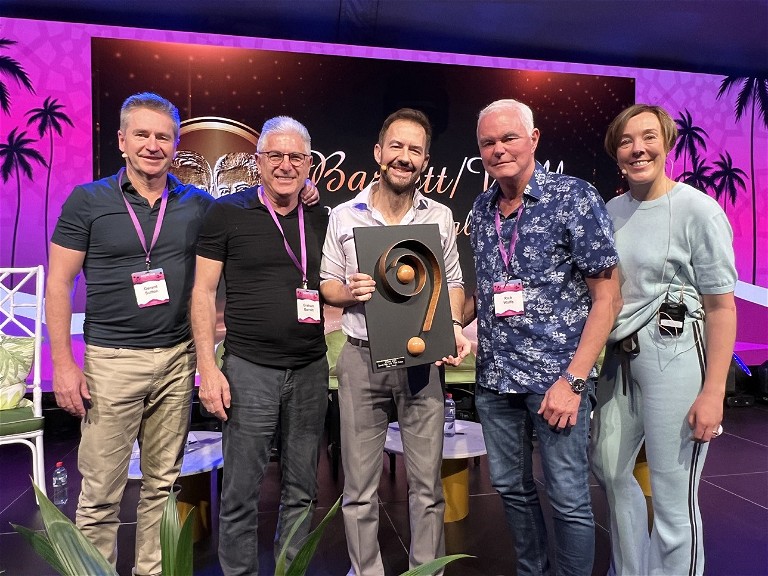
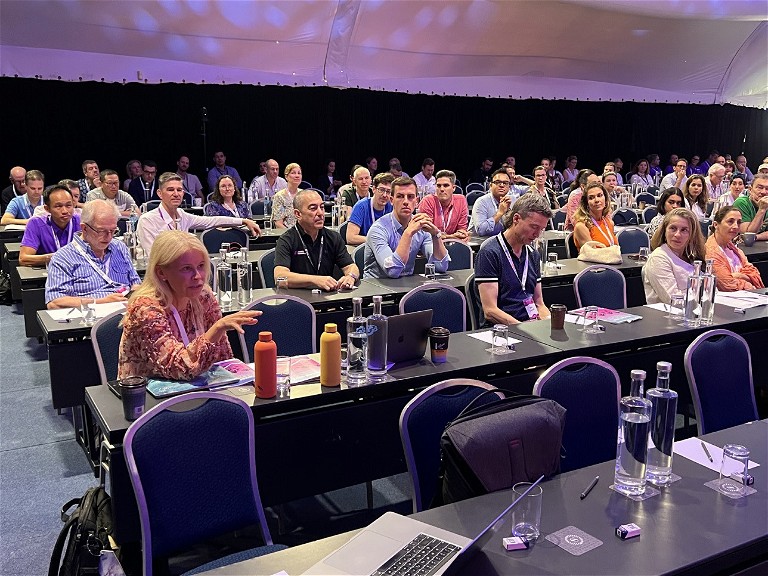
Session chair, Dr Ben La Hood jokingly stated from the podium that the only people who really understood some of the IOL formula presentations were the presenters on stage.
Dr Hill and Professor Filomena Ribeiro from Lisbon, Portugal, both mentioned the value of the recently released European Society of Cataract and Refractive Surgeons (ESCRS) IOL calculator, as it includes seven of the leading calculators, all in one place for easy comparison (iolcalculator.escrs.org).
Prof Ribeiro and others agreed that the Barrett True-K calculator was best for keratoconus.
We are reaching the limit of refractive endpoint precision. We need to know more about individual IOL designs and geometry – ray tracing comes from that and will help refine outcomes. Manufacturing tolerances need to be refined too, as this can amount to 0.50D and up to a dioptre of combined error.
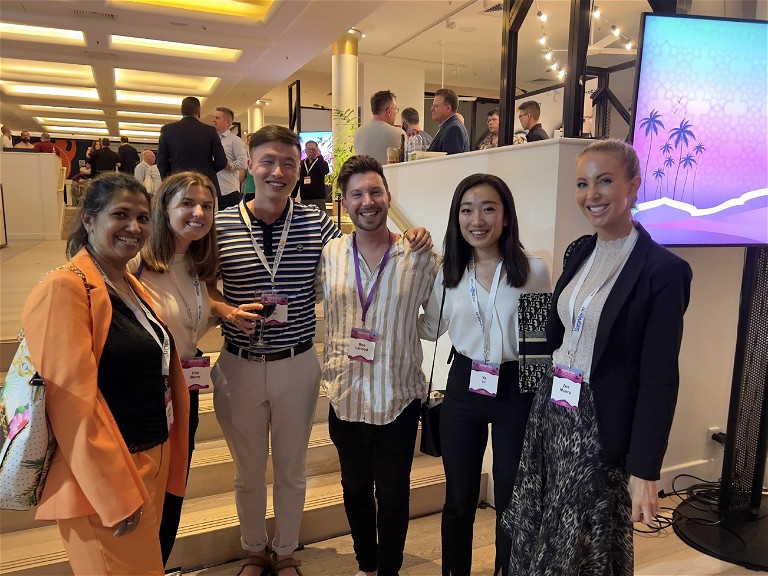
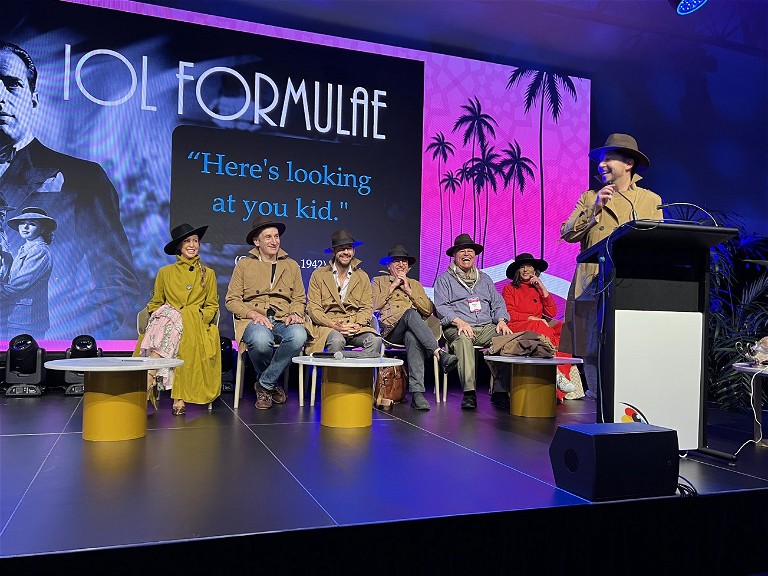
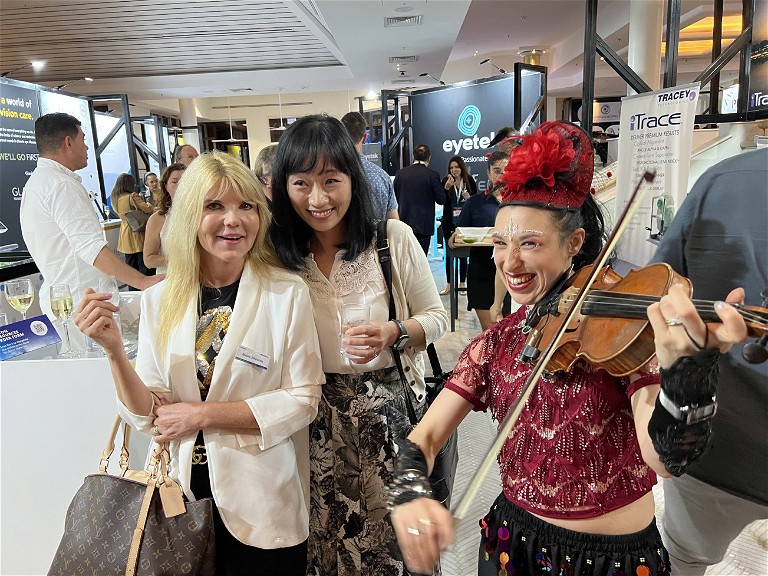
“ We need to know more about individual IOL designs and geometry – ray tracing comes from that and will help refine outcomes ”
Get to know one or two formulae very well, stick with those and tweak to reduce error margins.
IN OR OUT?
The benefits, safety, and value of implantable contact lenses (ICLs), as well as add-on (piggyback) sulcus IOLs, were discussed. Dr Lena Beckers from Hamburg, Germany, spoke on the evolution of ICLs. Her most common ICL choice corrects up to -18.00DS and 6.00DC. Their use is indicated when laser refractive surgery is contraindicated, for surgeons who don’t have access to refractive lasers, and for optimal outcomes in hyperopia. Piggyback options can be used to correct for a refractive surprise. Dr Patrick Versace stressed the importance of safety, through assessing the anterior chamber depth /angle, as it can narrow by as much as 35%, increasing risk of glaucoma /angle closure.
In a session titled ‘Heroism can be confined to brutal and ferocious valour’, surgeons presented enlightening cases and videos on why the EDOF presbyopic IOL they use is best.
In ‘Deep learning: loosen the knot and let me go’ a variety of surgeons shared their learnings and results with a variety of phaco machines or particular IOL designs, with interesting insights.
HAPPY PATIENTS
Associate Professor Abi Tenen discussed the important issue of ‘Peri-operative refractive stability amidst a myopia epidemic’. She noted that the significance of refractive instability is greater post-COVID with increased digital device driven myopia progression. We want to avoid dissatisfied refractive surgery patients coming back with myopia progression and instability. Surgeons often provide no-extracost retreatments, but should retreatment periods be time-limited?
In his talk ‘Evaluation of extended depth of focus with the light adjustable lens’, Dr Mark Kontos from Spokane Valley, US, said that these lenses work well in LASIK patients and other cases with increased risk of refractive surprises, and for monovision too. The ability to adjust refractive endpoints for a period of time post-op adds another level of confidence.
Angle alpha, premium IOLs – in the form of multifocal IOLs, EDOF, enhanced monovision, and other considerations – were discussed indepth, in the presbyopia IOLs session ‘It’s not the past that matters but the future’.
In an entertaining game show style cooking competition, pairs of surgeons had to decorate cakes while commentating on each other’s surgical videos. They had to decide if their partner would be their surgeon of choice and what IOL preference they would have for themselves. Drs Lena Beckers and Georgia Cleary were the winners with their fine cake and cases.
In the Happy Patients ‘Always look on the bright side of life’ session, Professor Kendall Donaldson of Plantation, in the United States, looked at aspects of visual acuity versus visual quality – what matters most. You can have good or poor quality 6/6 vision. Patients can be incapacitated at night through flare, glare, and starburst, particularly with multifocal IOLs. During this talk, and throughout the conference, modulation transfer function (MTF) was referenced. MTF is an optical bench measurement that helps us evaluate potential performance and a way to describe contrast sensitivity. Reading speed is a measure of visual quality as is stereo acuity, which is compromised with multifocal IOLs and monovision. New instruments can determine critical measures and aspects of vision and quality. Prof Donaldson also presented some metrics of patient satisfaction, quality, and what they want/expect. Residual refractive error and dry eye were the main complaints. She reported that 55% of doctors have poor communication.
Professor Michael Knorz of Mannheim, Germany, noted that monofocal IOL exchange is an option but should not be done before six months, as many patients will adapt. IOL exchange rates are low, at around 0.05%. In 99% of cases of dissatisfaction, patients are unhappy with distance vision. Do one eye first, then decide. Try YAG capsulotomy if the patient was initially happy, or an IOL exchange if they were unhappy from the start. Consider treating residual refractive error with options like laser refractive tweaks or add-on IOLs /ICLs, but this may not help with dysphotopsia.
“ In an entertaining game show style cooking competition, pairs of surgeons had to decorate cakes while commentating on each other’s surgical videos ”
In ‘Double trouble: double vision following cataract and refractive surgery’, Dr Lana Del Porto reported that anaesthetic infiltration into the inferior rectus can cause a hypertropic strabismus and diplopia. To avoid a fixation switch in patients with pre-existing strabismus /suppression, it is advised to do surgery on the dominant eye first. Other tips were not to mix and match IOL designs and keep anisometropia to less than 1.00D difference.
Dr Del Porto said she is seeing an increase in digital device related issues and myopic esotropia, with prolonged fixation on devices resulting in over-flexing of the medial recti. If prism was prescribed, get rid of the prism glasses and get the patient off devices for a few months. If there’s no resolution, strabismus surgery may be necessary.
THE HOME STRAIGHT
Saturday’s sessions kicked off with Technology Updates.
Dr Florian Kretz from Rheine, Germany, discussed how surgeons (and industry) can reduce their environmental impact. He suggested re-usable injectors and instruments that can be resterilised instead of using disposables. Use smaller sterilisers and wait for a full load of instruments. Manufacturers are reducing packaging and package inserts. The right handpiece can be used as many as 700 times. Surgeons can almost function autonomously, avoiding the need for nurses having to change their mask/gowns after each patient, if they are not needed in theatre. Do we need 25 instruments when seven might suffice?
Other speakers looked at virtual integration and AI.
Dr Cathleen McCabe of Sarasota, in the United States, discussed virtual meetings that dramatically reduce the carbon footprint, plus the convenience of watching recordings. She detailed benefits of virtual reality ‘hands-on’ training. But what’s missing is the great value of personal interaction, which AUCSRS offers by the spadeful. Virtual observation and 3D virtual surgery is amazing. Dr Beltz noted that in a world-leading initiative, all registrars in Australia and New Zealand must now comply with, and be proficient in virtual surgical techniques and training, before being allowed to operate on humans.
It was noted that AI software can create ‘hallucinations’ and give out false information, so caution is needed.
In the final AUSCRS lecture session, leading refractive surgeons presented their favoured approach and methods of patient selection. Femtosecond-laser small incision lenticule extraction refractive surgery is now favoured by many surgeons. Methods to achieve optimal results were detailed as were some new platforms from laser providers that offer smoother lenticule extraction, reduced swelling, and larger optics zones. There are still however, those who prefer LASIK and PRK.
“ After many film festival submissions over the years, Dr Ben La Hood was proud to finally take home the AUSCRS film festival trophy ”
Unaided intermediate vision is a priority for patients undergoing refractive and cataract surgery. For trifocals, the trade-off is dysphotopsia and reduced contrast.
Refractive surgery and IOLs in keratoconus were further addressed in this session, as was dry eye. Dr Pooja Khamar from Narayana, India, discussed how low vitamin D levels can be a cause of dry eye disease, and that in a significant number of cases ‘dry eye symptoms’ were in fact more likely asthenopia, as orthoptics and vision therapy alleviated subjective dry eye symptoms.
FILM FESTIVAL AND GALA DINNER
The traditional film festival was, as usual, a fitting close to the lecture sessions at AUSCRS 2023. After many film festival submissions over the years, Dr Ben La Hood was proud to finally take home the AUSCRS film festival trophy with his well-presented video and live voice-over, with a good mix of surprises, learnings, and humour.
The fancy dress gala dinner was another roaring success with the dance floor packed from go to whoa, followed by late night drinks in the pub where the die-hards enjoyed each other’s company until the wee hours.
AUSCRS committee member Associate Professor Abi Tenen summed up AUSCRS 2023 very well, “A conference is most successful if the discussions, debates, and exchanges of information are candid and innovative. AUSCRS has the unique ability to bring together world class speakers and the very best of industry in an environment that boosts learning simply because it is fun!
“A truly jampacked schedule consisting of the doctor’s program, advanced trainee and support staff programs, satellite sessions, a bustling trade hall and a host of social events, left everyone with almost too many choices! The indicator of success was that every time I looked around, all I could see were people smiling. They didn’t want to be anywhere else.”